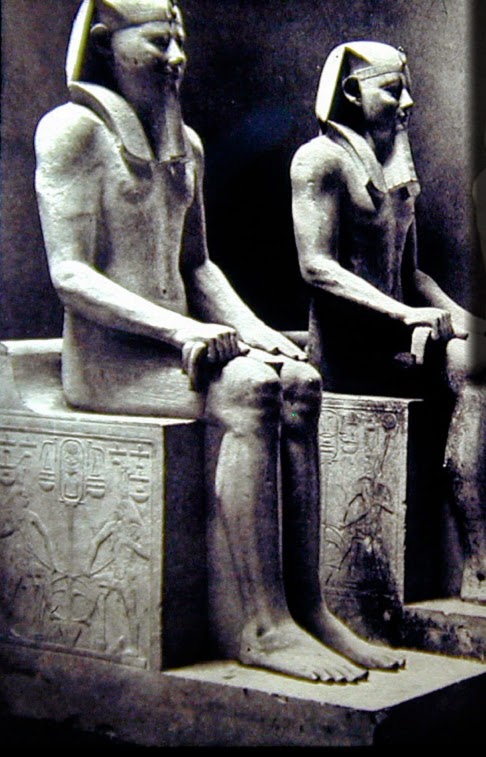Senusret I followed this revival and constructed a pyramid about 1.61 km to the south of Amenemmes I’s complex. The pharaoh Senusret I ruled from about 1971 to 1926 B.C.E., during the Middle Kingdom. He was a strong leader who ruled a stable, unified Egypt. Art, literature, and architecture flourished during his reign.
Craftspeople thrived under Senusret’s rule. The pharaoh controlled mines loaded with gold, copper, and gems such as purple amethyst. Craftspeople fashioned these materials into beautiful pieces of jewelry. Bracelets and necklaces were often highly detailed. They were then decorated with stones like turquoise.
Some of the greatest works in Egyptian literature were written during Senusret’s reign. “The Story of Sinuhe” tells of a young official named Sinuhe who overhears a plot to kill the pharaoh. Fearing for his own life, Sinuhe flees Egypt. He thrives in his new land, but he grows very homesick. When a new pharaoh calls him home, Sinuhe returns joyfully. Senusret’s greatest accomplishments were in religious architecture. He built and improved many temples, shrines, and religious monuments.
Perhaps Senusret’s finest architectural achievement was the White Chapel. (A chapel is a small temple.) It was made of alabaster, a hard white stone. Some historians think the chapel was originally covered in a thin layer of gold.
Beautiful artwork decorated the chapel’s pillars. Carved scenes showed the pharaoh with various gods. Birds, animals, and Egyptian symbols were also depicted. Senusret wanted his memory to live on through his monuments. But almost none of his buildings survived the passage of time. A later pharaoh took the White Chapel apart and used the pieces in a monument of his own. Archeologists later discovered the pieces and reconstructed the White Chapel.
Another important find which illustrates a strong association between Egypt, Asia and the Aegean is the El-Tod treasure. This was discovered in 1936, buried in the stone foundations of a temple at El-Tod in Egypt which, the archaeologists believed, was built by King Senusret I of the Middle Kingdom.
Craftspeople thrived under Senusret’s rule. The pharaoh controlled mines loaded with gold, copper, and gems such as purple amethyst. Craftspeople fashioned these materials into beautiful pieces of jewelry. Bracelets and necklaces were often highly detailed. They were then decorated with stones like turquoise.
Some of the greatest works in Egyptian literature were written during Senusret’s reign. “The Story of Sinuhe” tells of a young official named Sinuhe who overhears a plot to kill the pharaoh. Fearing for his own life, Sinuhe flees Egypt. He thrives in his new land, but he grows very homesick. When a new pharaoh calls him home, Sinuhe returns joyfully. Senusret’s greatest accomplishments were in religious architecture. He built and improved many temples, shrines, and religious monuments.
Perhaps Senusret’s finest architectural achievement was the White Chapel. (A chapel is a small temple.) It was made of alabaster, a hard white stone. Some historians think the chapel was originally covered in a thin layer of gold.
Beautiful artwork decorated the chapel’s pillars. Carved scenes showed the pharaoh with various gods. Birds, animals, and Egyptian symbols were also depicted. Senusret wanted his memory to live on through his monuments. But almost none of his buildings survived the passage of time. A later pharaoh took the White Chapel apart and used the pieces in a monument of his own. Archeologists later discovered the pieces and reconstructed the White Chapel.
Another important find which illustrates a strong association between Egypt, Asia and the Aegean is the El-Tod treasure. This was discovered in 1936, buried in the stone foundations of a temple at El-Tod in Egypt which, the archaeologists believed, was built by King Senusret I of the Middle Kingdom.







